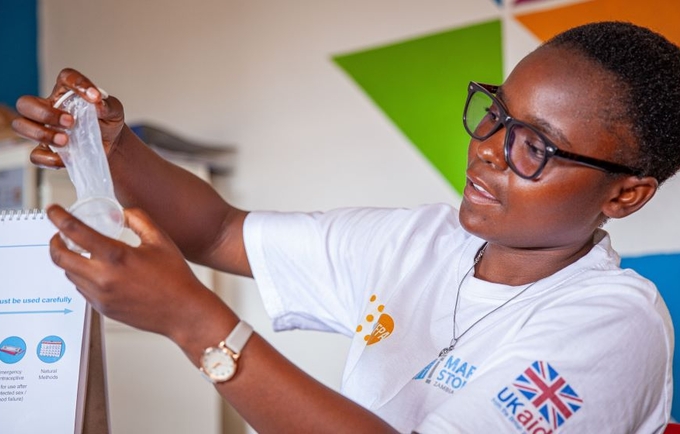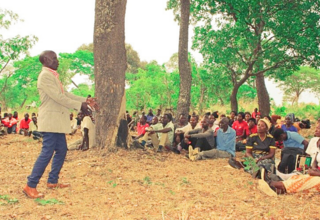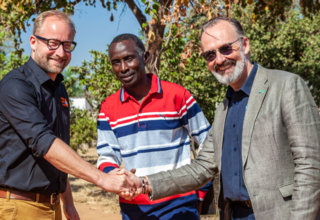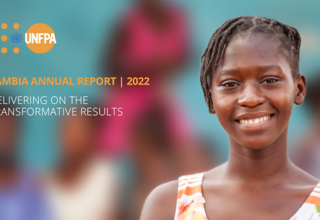OPINION EDITORIAL
By Ms. Gift Malunga, Country Representative, UNFPA Zambia
A few weeks back, an eye-catching caption in a local newspaper read: - “1600 Solwezi teens pregnant – number includes 100 girls aged between 10 and 14”. My heart and thoughts were immediately provoked to pertinently question whether or not as individuals, families, communities and society at large we are guilty of dereliction of duty in failing the vulnerable and at-risk adolescent girls!
Adolescent pregnancy is increasingly becoming a widespread and worrying public health and development challenge that can no longer be ignored. It is, without a shadow of doubt among key and persistent socio-economic development challenges in Zambia. Current evidence from the Zambia Demographic and Health Survey (2018) shows that 1 (one) in every 3 (three) girls (29%) becomes a mother by the age of 18 years – one of the highest teenage pregnancy rates in the world, with at least 35% of young girls in rural areas having given birth before or by the age of 18 years. This begs the question as to how, individually and collectively, at multi-level, as a country, we can harness our efforts and synergies to realise a Sexual and Reproductive Health (SRH) dividend for adolescent girls in particular as well as society at large.
Are we failing our adolescent girls?
For the record and avoidance of doubt, adolescence is a period marked by significant physiological, psychological and social changes for boys and girls, coupled with vulnerabilities as well as opportunities and potential. It is every child’s entitlement to a safe and successful rite of passage from adolescence into adulthood so that on the basis of available opportunities and choices the girls make during adolescence, they can begin adulthood either as empowered and active citizens, or conversely risk being neglected, voiceless and poverty-ridden individuals.
“I went through 3 (three) days of obstructed labour; it was painful and I thought I would die. My family subsequently took me to the clinic for assistance. I survived but my baby didn’t…and I later started leaking urine uncontrollably, a condition I later learnt was called Obstetric Fistula [a hole in the birth canal caused by prolonged obstructed labour without emergency obstetric care”.
This narrative was given by one of the many girls I have interacted with in various parts of the country; the story of a 19-year-old vibrant girl from a remote village, who dropped out of school at the age of 15 due to an unplanned pregnancy. This story continues to be a sad and painful reminder of the scourge afflicting many adolescent girls locally, regionally as well as globally, who become mothers while they are still children themselves, all the while with significant lost opportunities to realise and fulfil their potential.
The price of adolescent pregnancy
Available evidence indicates that adolescent pregnancy is associated with broader social, economic, cultural and religious factors. Poverty and lack of economic opportunities for girls in rural areas are cited as major factors leading to adolescent pregnancy, with some parents regarding the girl child as an economic asset exchangeable for goods, money and/or livestock.
From an economic perspective, adolescent pregnancy remains one of the key factors driving inter-generational poverty in many African and like-countries such as Zambia, with corresponding impacts on availability of skilled workforce required to grow an inclusive and strong economy. When prospects for girls to pursue their education and secure decent economic opportunities are compromised due to early pregnancies, this in turn impacts the country’s development and the lifetime opportunity cost related to adolescent pregnancy.
Adolescent pregnancy also contributes to high child mortality and poor maternal health outcomes, thus placing a huge burden on the health system. For our girls, many of whom soon become ‘child brides’, repeated pregnancies and childbirth before they are physically and psychologically ready to become mothers also poses life-threatening risks, including risk for maternal death and obstetric complications such as Fistula. Their unborn are often at higher risk of being pre-term at birth, having low birth weight and related foetal death.
It is trite to point out that while keeping girls in school has multiplier effects, adolescent pregnancy is a major contributor to school dropouts among girls in Zambia. Available evidence shows that girls married before the age of 18 are more likely to come from poor and rural families. In contrast, girls who have completed secondary and tertiary education tend to marry and start childbearing later and have smaller families. Furthermore, even though Zambia has a re-entry policy, sometimes girls who would want elect to return to school face barriers such as stigmatisation by their peers and limited support in terms of child care. This reduces their chances of fulfilling their potential and becoming productive citizens in future.
Adolescent pregnancy must be addressed by all stakeholders
Adolescent pregnancy cannot be left unchallenged. Addressing this key health and development challenge provides a window of opportunity for harnessing Zambia’s Demographic Dividend or the economic benefit that can be realised when a population has a larger proportion of working-age people relative to its young dependents, and effectively investing in their empowerment, health, education and employment.
Before attempting to offer any recommendations to reduce adolescent pregnancies, it is important to highlight that the determinants are multi- dimensional and multi-sector.
At the individual level, the adolescent becomes the focal point who plays a critical role in preventing pregnancies. The key issues/factors relate to the adolescent’s exposure to ‘media effects’, knowledge, level of education, attitudes, behaviours and general disposition towards engaging in risky sexual behaviours including multiple sexual partners and unprotected sex. On the other hand, the individual’s sexual behaviour is mostly influenced by family members, particularly by parents, elder siblings and close relatives, within the context of an adolescent’s socio-economic status, religious persuasion, level of education, interactions with peers/significant others. Risky sexual behaviour is also undoubtedly a function of poverty in the household to which the individual belongs
Further, the community/society to which the adolescent belongs also influences the individual’s SRH behaviours particularly through community organisations and institutions, such as churches and schools). Lastly, national, local government and other legal/policy frameworks should provide a conducive environment and enablers for positive SHR outcomes for adolescents.
Adolescent pregnancy must be addressed by all stakeholders
The observations made above notwithstanding, current efforts by the Government of the Republic of Zambia, civil society, community leaders and cooperating partners to scale-up multi-sectoral national responses to adolescent pregnancy are commendable. Many studies undertaken globally and within the region have demonstrated key success factors that have contributed to significant reductions in adolescent pregnancies which include but are not limited to:
- Expanding family planning services for adolescent girls and young women, especially through community-based distribution methods, aimed at reducing unmet need for family planning.
- Addressing immediate gaps in access to age-appropriate and adolescent-friendly health services that conform to international standards, which in many countries has proved to be a critical pathway towards accelerating reduction in unintended pregnancies, unsafe abortions, obstetric fistulas and overall maternal mortality among adolescents.
- Investing in community-centred programmes aimed at addressing socio-economic vulnerabilities of girls. This includes exploring innovative and sustainable ways to keep girls in school.
- Investing in the generation, dissemination and use of age-disaggregated data to guide effective adolescent health. A commonly-identified data gap is the lack of indicators related to 10-14-year-old adolescents, particularly girls, as many current instruments begin measurements on reproductive health at age 15.
- Systematically engaging men and boys and fostering a culture of zero-tolerance to GBV especially rape and defilement which are a cause of most pregnancies among adolescents.
It is however acknowledged that these goals are not the easiest to achieve, and that there are barriers, which hinder families, schools, and communities in achieving these worthwhile interventions. It will take concerted and community-wide efforts for us to end adolescent pregnancies.
A combination of policies and interventions that specifically address adolescent pregnancy, may ultimately improve life outcomes for adolescent girls, thereby providing necessary conditions to harness a demographic dividend.
Postscript: This opinion is proffered and derived from the heart-rending narrative and life experiences of a vulnerable adolescent girl, who on account of privacy and ethical considerations cannot be named. Without detracting from the fact that the story should and does induce a sense of alarm and despondency on the plight of many adolescent girls, which should galvanize us ALL into action.




